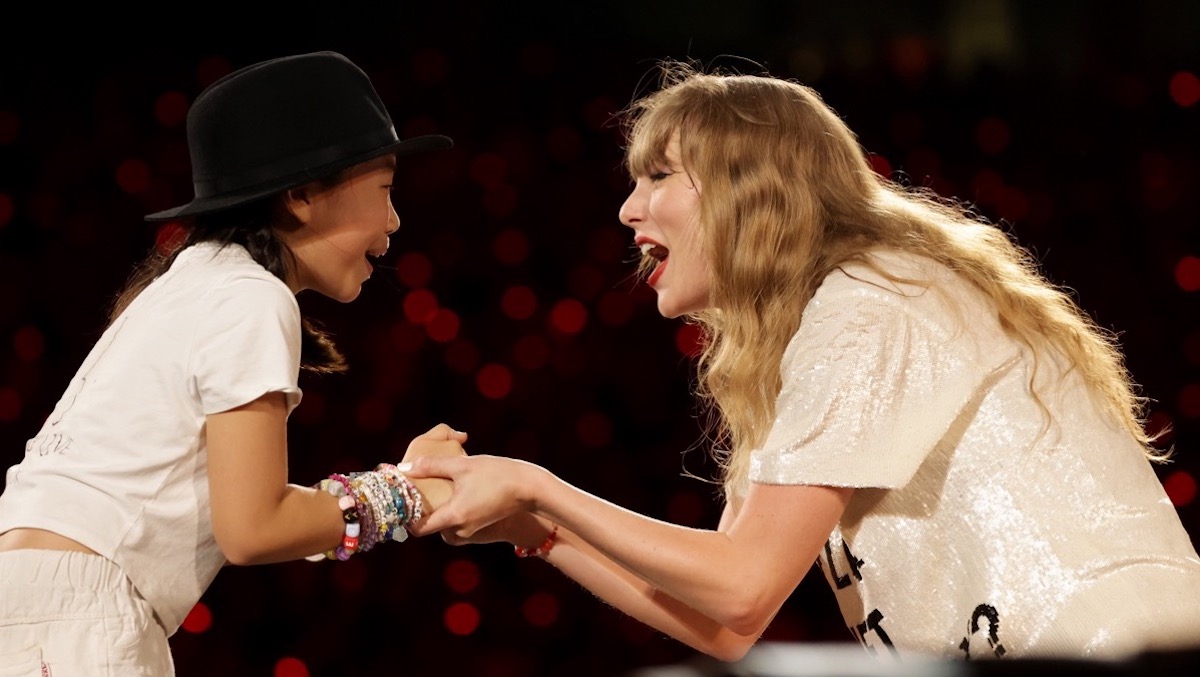How Taylor Swift’s Eras Tour Has Revolutionized Fandom Factions

Taylor Swift: The Eras Tour (Taylor’s Version) has just dropped on Disney+, which means folks all around the world are able to stream the three-and-a-half-hour journey through the eras Taylor has masterfully put together.
The idea of Taylor Swift’s “eras” (with each correlating to one of her ten—soon to be eleven—albums) has been around for a while now, but this tour has taken it to a whole new level.
People in fandom have a tendency to label themselves. You have your Whovians, Arianators, Trekkies, the list goes on. But I’m talking about the next level of division. You may love Avatar: The Last Airbender, but what kind of bender would you be? You might have read every Twilight book and seen all the movie adaptations, but were you Team Edward or Team Jacob? You may have been a Divergent devotee, but which faction would you have chosen to be part of?
If collective fandom names are a way of proclaiming your devotion to an artist or story, these squads within fandoms are a way of making your mark on the community, or even—when applicable—the story itself in a way. It’s a way of living vicariously through the characters and figuring out how you’d fit into their world, as well as expressing a facet of your personality. A lot of the groupings within stories are united by a certain common value or trait, and even the less formal fandom categories, like who you ship, can say a lot about you.
The most famous example of this, of course, are the four Hogwarts houses from the Harry Potter franchise. Casual and hardcore fans alike have determined whether they’d be part of Gryffindor, Hufflepuff, Ravenclaw, or Slytherin (with many having a small identity crisis based on the results of an online quiz), and even those less familiar with the series have gotten in on it over the years. This has become a problem in recent years, though, as author J. K. Rowling’s transphobia has come to light in full force, and folks have had to come to grips with letting the franchise go.
For some, having to distance themselves from the Hogwarts house they had once proudly associated themselves with has been one of the most difficult parts of this. Luckily, Taylor Swift has brought her eras to fill the house crest-shaped void in popular culture. Not only that, but she and her fans have improved the concept of fandom squads in a way that will hopefully quell those pesky identity crises that have come from not knowing where you “belong.”
Much like the Hogwarts houses or Divergent’s “factions,” each Taylor Swift era comes with certain vibes, aesthetics, and personality traits. People have been dressing in outfits inspired by the eras both at the tour itself and “in the wild” and making mood boards, color palettes, and playlists of non-Taylor Swift songs inspired by each of them. The difference comes in the term “era” itself; each of Taylor’s albums has come out at a different time in her life and focuses on different experiences she’s had and lessons she’s learned. When she comes out with a new album, she never completely throws the previous ones behind, releasing “chapters” (mini playlists) featuring some of her old songs and incorporating “surprise songs” into her shows, which she has done even on tours focused on single albums. She even released
“Cruel Summer,” a song from her 2019 album Lover, as a single in 2023, well after three subsequent albums had been released.
The idea of the Eras is that there is a sense of both permanence and impermanence to them. Album cylces come and go, but every album becomes a part of the Taylor Swift discography and “canon” that can be revisted every time that she—or the Swifties—would like. The fans have also embraced this culture surrounding the Eras, of fluidity over rigidity; it’s not a question of “which Era are you?” but “which era are you in right now?”
The Eras are about embracing who you are right now, and appreciating who you’ve been in the past and may be in the future. This can apply to fashion and aesthetics, but also emotions and mindsets. The overall mood of Midnights is quite different from Fearless, for example.
Both Swifties and Taylor herself have even played with combining the eras in different ways. Fans have been known to come up with outfits based on multiple eras (Reputation and Lover being a popular combination, in addition to the more obvious pairing of Folklore and Evermore), and on the most recent leg of the Eras Tour, Taylor has been performing mash-ups of her songs during the acoustic set. A few have been from the same album, but most have been cross-Era, like how she mashed up her self-titled album’s opening track, “Tim McGraw,” with Evermore’s “Cowboy Like Me” in Singapore and Red’s “Come Back…Be Here” with Lover’s “Daylight” in Australia.
Unlike other fan classification systems, Taylor Swift’s Eras aren’t meant to permanently define who we are, but to help us express and celebrate who we are today. The Eras Tour does this by going through each era, one by one (except, notably, debut album Taylor Swift), and the Swifties do it by embracing the music and messages from each one as part of Taylor’s story, as well as their own.
(featured image: Ashok Kumar/TAS24/Getty Images for TAS Rights Management)
Have a tip we should know? [email protected]
